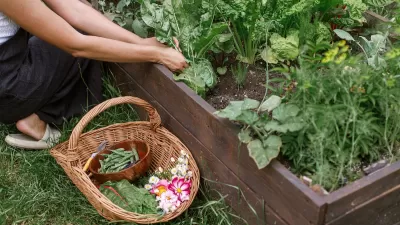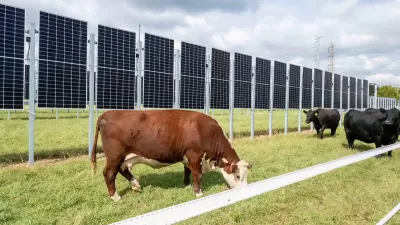The Mandan, Hidatsa, and Arikara Nation in North Dakota is launching a massive greenhouse project to regain their agricultural heritage and achieve food sovereignty.

The Mandan, Hidatsa, and Arikara Nation in North Dakota is revitalizing its agricultural roots through a substantial greenhouse complex, set to become one of the largest in the United States. As reported by Jack Dura, this initiative aims to grow leafy greens, tomatoes, and strawberries, allowing the tribe to achieve greater food sovereignty decades after their fertile lands were flooded by the construction of the Garrison Dam. The first phase of the project, costing $76 million, includes a 3.3-acre greenhouse and additional facilities, with plans to expand to 14.5 acres, significantly enhancing the tribe's capacity to produce fresh produce.
This greenhouse project is part of a broader movement to increase food sovereignty among Native American tribes, spurred by supply chain disruptions during the COVID-19 pandemic. By investing in local food systems, tribes across the nation are reclaiming their ability to feed their communities independently. The Mandan, Hidatsa, and Arikara Nation's greenhouse will support the Fort Berthold Indian Reservation's 8,300 residents and provide produce to other reservations and food banks in isolated areas. The operation is expected to create 30 to 35 jobs initially, with production goals of up to 15 million pounds of food annually.
A key element of this initiative is the use of natural gas resources from North Dakota's Bakken oil field. The tribe plans to capture and compress natural gas, traditionally flared off, to heat and power the greenhouse and produce fertilizer, addressing environmental concerns and reducing waste. This project not only reconnects the tribe with their agricultural heritage but also leverages modern resources to ensure sustainable and independent food production for the future.
FULL STORY: North Dakota tribe goes back to its roots with a massive greenhouse operation

Planetizen Federal Action Tracker
A weekly monitor of how Trump’s orders and actions are impacting planners and planning in America.

San Francisco's School District Spent $105M To Build Affordable Housing for Teachers — And That's Just the Beginning
SFUSD joins a growing list of school districts using their land holdings to address housing affordability challenges faced by their own employees.

The Tiny, Adorable $7,000 Car Turning Japan Onto EVs
The single seat Mibot charges from a regular plug as quickly as an iPad, and is about half the price of an average EV.

Seattle's Plan for Adopting Driverless Cars
Equity, safety, accessibility and affordability are front of mind as the city prepares for robotaxis and other autonomous vehicles.

As Trump Phases Out FEMA, Is It Time to Flee the Floodplains?
With less federal funding available for disaster relief efforts, the need to relocate at-risk communities is more urgent than ever.

With Protected Lanes, 460% More People Commute by Bike
For those needing more ammo, more data proving what we already knew is here.
Urban Design for Planners 1: Software Tools
This six-course series explores essential urban design concepts using open source software and equips planners with the tools they need to participate fully in the urban design process.
Planning for Universal Design
Learn the tools for implementing Universal Design in planning regulations.
Smith Gee Studio
City of Charlotte
City of Camden Redevelopment Agency
City of Astoria
Transportation Research & Education Center (TREC) at Portland State University
US High Speed Rail Association
City of Camden Redevelopment Agency
Municipality of Princeton (NJ)





























